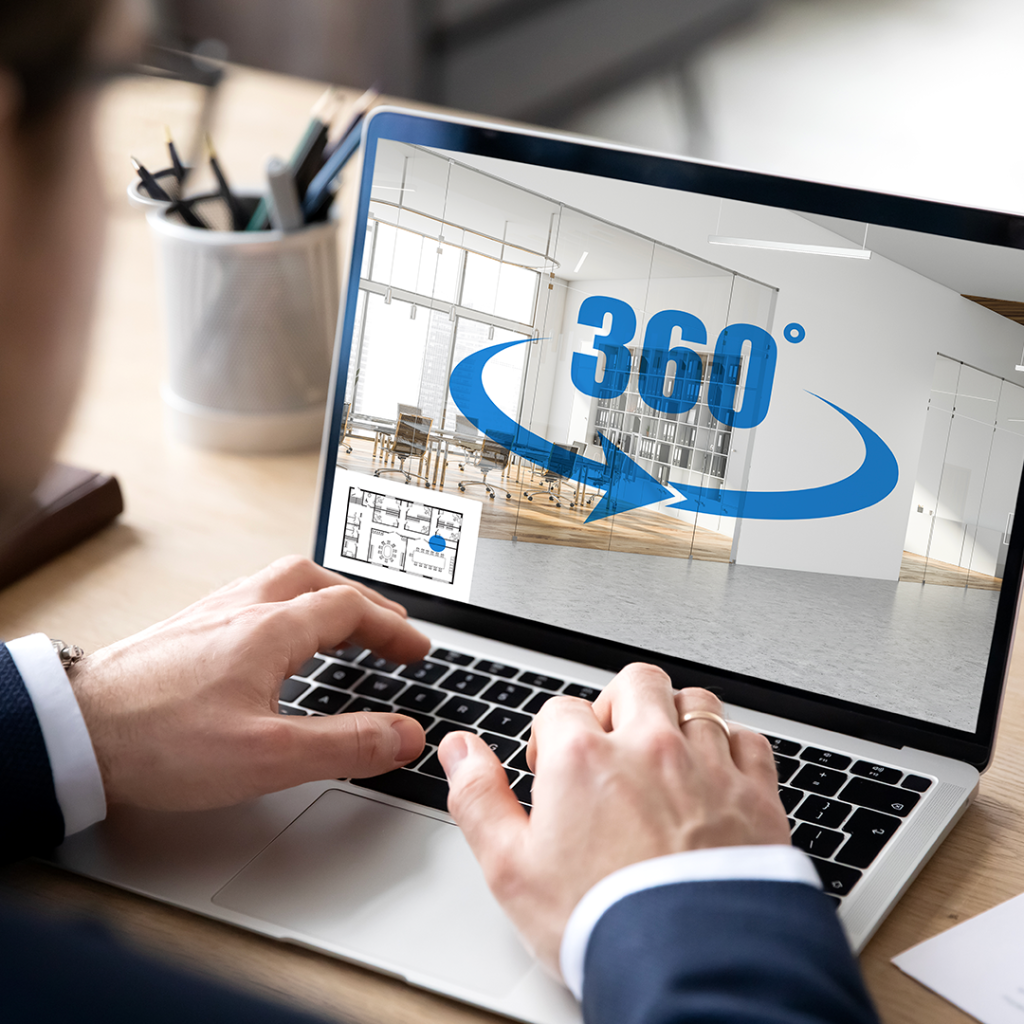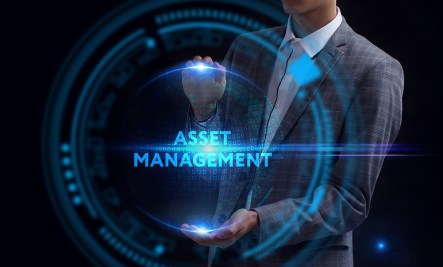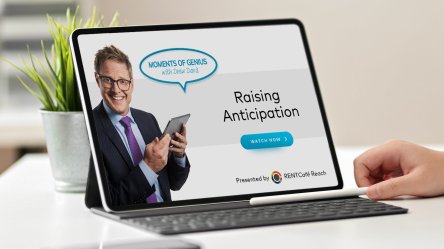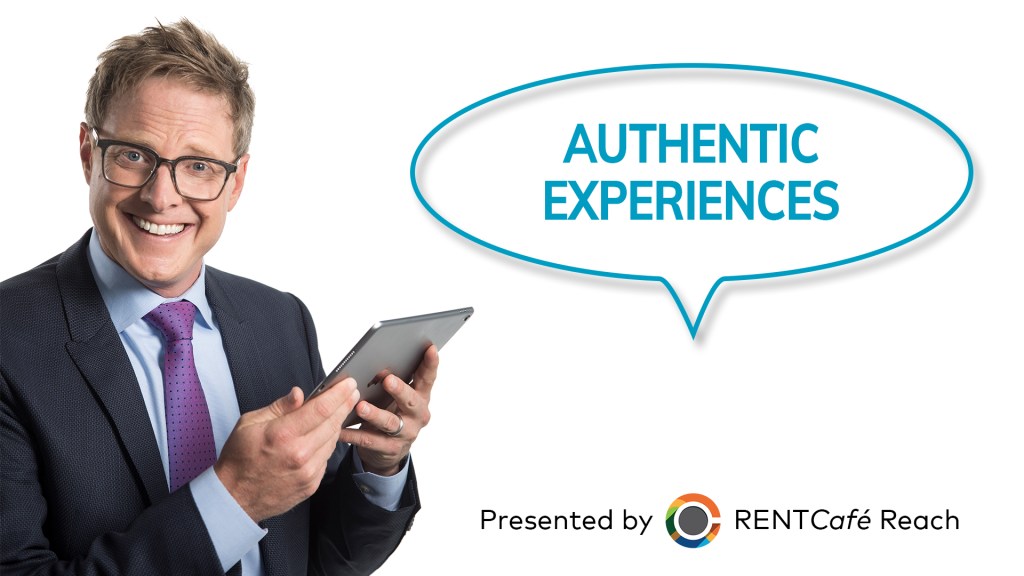Last fall, Zach Scott, vice president of programming for Yardi Canada, provided our readers with an illuminative look at the role of his engineering team on Yardi’s most cutting edge product offerings. In the research & development realm, progress moves fast, so recently we brought Scott back for an update on project progress and current initiatives. Let’s kick it off with machine learning, which is now being practically applied to multiple Yardi products, with more to come in the near future. Zach, tell us about machine learning’s role in the Yardi Full Service PayScan experience? Scott: On this machine learning test, we have almost 200 clients live. So far this year, we have processed 1.3 million invoices. We went from 290,000 invoices per month in January, to 390,000 in February, to 450,000 in March. We’re anticipating growth to 600 clients by mid-year. This has been a huge success. What machine learning does is automatically extract a half dozen key fields from the invoice image, such as invoice number, date, property details, vendor info, phone number, email address, and more. It pulls all of that directly off the invoice. The overall accuracy is typically around 75 to 80 per cent. How about the use of machine learning in the Yardi Marketplace on-boarding process? Scott: When new vendors are onboarded into Yardi Marketplace, it often means uploading massive spreadsheets that contain more than 20,000 product barcodes (SKU). Before machine learning was applied, this was a manual process that meant personnel were sorting through every SKU to place them into three categories. That means 60,000 category assignments had to be manually selected. This used to take weeks to complete. Thanks to machine learning, we can now categorize 20,000 SKUs in about 15 minutes. After that initial sorting,...
Sarah Wieman
Proving Marketing Returns
Property marketing has always been an art, but these days, there’s more science involved than ever before. Sure, you need art to tell the story of your community and inspire prospective renters to take the next step. But you need science to prove that your campaigns are working or, if they’re not working, help redirect your strategy. That’s where marketing data and analytics come in. Sarah Wieman, senior manager of branding and marketing at PRG Real Estate, is no stranger to this concept. Taking advantage of the increasing accessibility to marketing data, she compiled her own case study to see which strategies and sources bring in the most renters. What she found has had a significant impact on PRG’s marketing mix — and will continue to do so as new data becomes available. Here, Sarah shares her discoveries in her own words. Why is marketing data so important to you? Sarah: I was told in grad school that the hardest thing about being a marketer is proving your worth. People like to joke that marketing just asks for and spends budget, but it’s important to me to show that my team’s strategies are working. That we’re actually bringing money in. Can you share an example of a time you used data to prove results? Sarah: In response to the pandemic, PRG Real Estate took the initiative to reevaluate how we market our properties and where we spend our ad dollars. We branded our properties and refocused our budget. After we did that, I decided to do a case study for our executives and also for our regional directors and managers to prove that the adaptations to our strategy are working and paying off in terms of ROI. It was an exercise to secure their trust. What did the case study find? Sarah: I looked at applications-by-source and cost-per-lease for five of our top sources: Google Ads, website SEO and three different ILSs. Looking at applications-by-source in 2020, we received the most from Google Ads. A total of 2,080 applications in fact. And we also onboarded with our new SEO provider which happens to be REACH by RentCafe. Our sites began to pick up more traffic as we optimized them more effectively, and they became our second top source, bringing in a total of 1,952 applications last year. With the ILSs, there was one that stood out with a higher number, 677 applications, but they represented the smaller chunk overall. The, when I reviewed the data for the first half of 2021, I found that model was still holding true. PRG Real Estate applications-by-source in 2020 Google Ads: 2,080SEO: 1,952ILS 1: 677ILS 2: 511ILS 3: 286 What did your cost-per-lease data reveal? Sarah: I made the decision to look at leases instead of leads because that’s where the actual money comes in. In 2020, average cost-per-lease across our portfolio was $265.91. Again, looking at our top five sources, we found that Google Ads had the lowest cost-per-lease, followed by website SEO and then the ILSs. We realize that the PPC rates we’ve experienced are amazing. I’m happy to report that our 2021 data showed much the same thing. Google Ads cost-per-lease has gone up slightly and SEO cost-per-lease has decreased as site optimization continues to improve our reach, but PPC is still our top source for leads that convert. PRG Real Estate cost-per-lease by source in 2020 Google Ads: $32.77SEO: $65.96ILS 1: $524.29ILS 2: $1,362.37ILS 3: $349 What was the big takeaway for you? Sarah: When I started this case study — and I’m going to continue to do them — I wanted to create a holistic view that unites all my vendor and partner data. For us, the biggest takeaway was that, at our portfolio, PPC yields the most approved applications, and it has the lowest price tag. One of my properties has a $15 PPC cost-per-lease. SEO is...
Optimizing Tech
In Tough Situations
You never want things to go wrong, but when they do, you want to be prepared. In many cases, property management tech can help. When news broke of a resident in distress and it seemed like they could injure themselves or others within a quiet New Jersey apartment community, police were quick to arrive on scene to alleviate the situation. But things escalated when the issue couldn’t get resolved. As police arrived to assist, residents in the apartment complex were asked to shelter in place. “We had to immediately communicate to our residents not to leave their apartments due to the fact that police were active on the property,” said Jack Linefsky, vice president of Value Companies. Value Companies owns more than 3,200 multifamily units in New Jersey and New York. They’ve been a Yardi customer for over 30 years, but they’ve never had to use Yardi technology the way they used it that day. As law enforcement entered the premises, Linefsky and the Value Companies team took advantage of RentCafe to communicate with residents and help authorities. First, they leveraged the RentCafe resident portal to quickly get a message out to residents. “We were able to send voice messages, text messages and emails to all residents,” Linefsky said. “We crafted it on the go and made sure everyone was aware of what was happening.” When authorities needed a visual guide to help navigate the property, Linefsky knew exactly how to assist. “The police needed our floor plans, so I was able to easily pull it up on our RentCafe website,” Linefsky continued. “I just showed them the plans on my phone, and they were able to take action.” After an hours-long standoff, the situation was resolved peacefully. Linefsky and his team then used...
Online Payments
How to Boost Enrollment
Online payments offer benefits for renters and site staff such as convenience and lower costs. But before you can reap the benefits, you’ve got to get residents to enroll. We’ve got a few quick tips to make the process easier. Online payments add value for residents Per the National Apartment Association, about 78% of residents prefer to pay their bills online. Renters value the convenience of 24/7/365 access to their accounts. And they can submit payments at any time, rather than working within the confines of leasing office hours. Additionally, each online method reduces the risks and data entry associated with cash as well as the hassle of ordering, writing and waiting on paper checks to process. Online payments offer a variety of payment methods to fit your residents’ preferences. Bank account, credit or debit card ACH transactions may occur on single and reoccurring basis. TextPay and voice payments via Resident Services: Alexa Skill are added conveniences. All payment options are easily accessible through your RENTCafe resident portal, which adds value for your renters. More than 92% of respondents consider online rent payment an important resident portal feature. Optimize staff hours with online payments What can your staff accomplish in a workweek without opening mail, scanning checks, trips to the bank, or data entry? Much more. They can nurture new leads and promote retention by building rapport with residents. Both skills bolster your bottom line far more than tedious and redundant tasks like data entry. When you increase adaptation to online payment processing, everyone wins! But first, you’ve got to get renters to enroll. Check out these five tips to boost online payment enrollment. Create an awareness campaign including emails, social media posts, and print posters at the leasing office (especially near the rent...
Property Management Preparedness
Prep for Shipping Delays, Price Volatility
Imagine it: your property, November 1st, 2021. Your team is scheduled to turn six units when you get a numbing report. Your trusted suppliers are out of stock on carpet and semi-gloss paint for trim. You scramble to find a new supplier, but the cost is 14% higher and expedited shipping costs are extreme. It’s not an unlikely scenario, and you can potentially avoid it. More than 80% of the world’s goods are transported by sea. The latest records indicate that sea freight charges have increased by 547% over their seasonal average. The result on land will be more out-of-stock items and higher costs on everyday goods for your property. Property managers would be wise to plan ahead on items that they need most. International cargo shipping rates and times increase The average price of a 40-foot shipping container has quadrupled from this time last year and there was a surge of more than 53% in July, reports the Wall Street Journal. Congested ports are one of the leading problems. In the first five months of 2021, Sea-Intelligence ApS of Denmark reported record-breaking delays. Nearly 700 ships were more than a week late to their destinations along the West Coast. For comparison, there were 1,535 late arrivals throughout all of 2012-2020. This summer, a daily average of 30 containers wait in queue outside of the Ports of Los Angeles. Other factors include a shortage in containers, skeleton crews at docks, labor shortages at manufacturers and rising demand as retailers reopen in the West. When might delays plateau? Analysts foresee serious delays at least until after the Lunar New Year of 2022, mid-February at the earliest. Most Chinese factories shut down for the holiday, halting production and shipping. This may afford a few days where in-progress shipments continue while manufacturing pauses (temporarily easing the influx of ships to ports). But once workers return, they’ll have to play catch up. The delays will continue, at least for a while. How do shipping delays impact property owners? Brian Bourke, chief growth officer at Seko Logistics based in Itasca, Ill. recommends placing large trans-Pacific orders at least two months in advance of normally anticipated dates. “Global trade right now is the hottest restaurant in town,” he said. “If you want to get a reservation, you need to plan it out two months in advance.” As a result, property managers can expect shipping delays and higher prices on imported goods. Though the shipping backlog has been growing for months, price increases were nominal and less frequent. Companies lock in contractual rates with container lines. Yet as their annual contracts end, new contracted rates will reflect higher shipping costs which will, in turn, be passed to consumers. HSBC Holdings Plc estimates that a 205% increase in freight costs translates to about a 2% price increase for European producers. (The cost increase is currently closer to 550%.) Canadian businesses are passing price increases as high as 20% on to consumers for bulky items like appliances. Estimates on U.S. consumer price increases vary, but the consensus is that prices will rise. Some goods simply won’t be available, large and small items alike. From the coffee stocked in the leasing office to furniture for furnished units, “temporarily out-of-stock” will become common on supplier websites. In these cases, freight costs can compose more than 60% of product cost, become cost prohibitive for suppliers. Property manager game plan A few tips can help property managers navigate the turbulent waters ahead. Plan ahead. Use reporting tools in your maintenance operations software to understand your fall and winter trends for supplies. Transparency into maintenance operations facilitates better foresight and planning. Review what you’ve spent on supplies in previous falls and winters. This may give you a baseline of what to expect. Take a moment to research available data on price increases and shipping delays in your market. That information will allow...
How High
Can Buildings Go?
In the early 1930s, the title of world’s tallest building was claimed three times in rapid succession – by the Bank of Manhattan, the Chrysler Building and the Empire State Building, all in New York City. Since then, the designation has changed hands many times, with Burj Khalifa in Dubai, United Arab Emirates, the current champion at 2,717 feet, followed by the 2,073-foot-tall Shanghai Tower and the Makkah Royal Clock Tower in Mecca, Saudi Arabia, which tops out at 1,971 feet. The tallest building from 2004 to 2010 – Taipei 101 in Taiwan, which Burj Khalifa usurped – now occupies the No. 10 spot. The Willis (formerly Sears) Tower in Chicago reigned for 24 years until 1998 and now sits at No. 22. And Bank of Manhattan, now known as 40 Wall Street, doesn’t even crack New York’s top 20. Although construction declined in 2020, the year still saw 106 completions of buildings 656 feet and taller, including the 1,500-foot-plus Central Park Tower and 1,400-footer One Vanderbilt, both in New York. Industry observers predict that up to 150 buildings 656 feet or taller will be completed in 2021, with between 14 and 30 being at least 984 feet tall. Will it stop? Won’t physics impose limits to the upward trend? Structural engineer William Baker doesn’t think so. The buttressed core design used for Burj Khalifa could allow structures to “conceivably go higher than the highest mountain, as long as you kept spreading a wider and wider base.” In fact, he says, “We could easily do a kilometer. We could easily do a mile. We could do at least a mile and probably quite a bit more.” The next generation of behemoths includes the partially constructed Jeddah Tower in Saudi Arabia, designed to reach 3,281...
Percentage Rent Model
A tool to consider
For the last year, CRE professionals have closely watched the overall economy and the commercial real estate market to monitor the effects of the pandemic. We’ve discussed the value of knowing your tenant, how the industrial market has largely remained strong and how to handle rent concessions and deferrals. One concept that has flown under the radar is the percentage rent model. Percentage rent is simply the process of applying a percentage rate, above a monthly base rent, based on the monthly income of a tenant. According to Peter Morris, principal at Greenstead Consulting Group, “this royalty is paid to the landlord to entice the landlord to consistently improve their property for more traffic flow, better co-tenancy, etc.” Morris appeared on a recent ICSC webinar to address the percentage rent model and its effectiveness in today’s market. “Percentage rent has no offsetting costs,” Morris added. He believes this is a tool that can be used effectively by both landlords and tenants. “If you can’t give all of one thing, you can offer the rest in percentage rent and negotiate it all the way down to zero,” he said. One of the keys, however, is to introduce the model at the beginning of negotiations. Because landlords are highly focused on certainty, “percentage rent is a tool that should be in every lease,” as Ivy Z. Greaner, COO at Bedrock Detroit, explained. Now, due to the Covid-19 pandemic, “landlords should implement percentage rent as the place to alleviate for all retail tenants,” she added. The general consensus is that this model does not get used often enough. Typically, in retail leases, 7% on every dollar is industry standard when gross sales reach an agreed-upon amount known as the breakpoint. However, tenants may choose to offer a higher percentage, in exchange for lower base rent or lease renewal right, if they believe their income may not rise quickly. When it comes to financing a property, percentage rent could play a role as well. “Because percentage rent is fluid and a retailer isn’t obligated to pay it, lenders don’t necessarily underwrite on it, but it does give them confidence,” Greaner said. Lenders can tie it into longevity at a site versus the odds a retailer would leave elsewhere, but the panelists agreed overall it wouldn’t move the needle on the cap rate or on the determining factors whether to make a deal. As a landlord relying heavily on percentage rent, Morris suggested looking at the market rent versus the base rent you are achieving, which will help you get a deal or justify the financing needed for another property. It may not be a driving factor in negotiations with a lender, but it could be a smart add-on to conversations. Gavin Farnam, president of retail services at Madison Marquette, said that his company has actually used COVID-19 restrictions as a driver for new deals that previously would not have been as desirable as they are now, such as open-air restaurants or gathering spaces. He said their company is doing lower base rent with increased percentage rent to incentivize business owners to create cool, trendy establishments where there is community demand. While offering percentage rent is not feasible or advisable in all instances, Morris says he uses this tool often. “In my history of doing leasing for landlords and tenants, I mention it right off the top in a quid pro quo basis in order to get a deal done,” he said. Airport retail is almost exclusively a percentage rent business. While the actual hangar space and other tenancy in the airport is traditional rent, retail establishments are driven by percentage rent and are typically very profitable due to upcharged goods (for example, $20 for a breakfast that would be $10 elsewhere). There are several factors to take into consideration, such as a user’s occupancy cost and gross margins, when negotiating percentage rent. “We...
Tech Harmony
PM Springfest, Canada
We’ve learned that most every company is a tech company: in the past year, companies that prioritized adaptability and tech innovation managed to thrive in the most unprecedented circumstances. At PM Springfest, two real estate industry experts shared their best practices for tech selection, implementation and creating efficient processes that scale. Their analysis offers insights and inspiration to prepare Canadian property managers for a harmonious future with technology. PM Springfest 2021 PM Springfest is a two-day online educational conference for decision makers and influencers of the property management industry. The event gave participants the opportunity to connect, network, learn and share insights on the industry’s most important topics including sustainability, legal and regulatory issues, resiliency and technology. Panelist Sandeep Manak, CFO, Wesgroup Properties, Brian Turpin, CIO, Greenwin and moderator Sam Amin, marketing manager, Yardi Canada led the webinar, “Hello New World: Are You Ready for the Future of Real Estate Tech?” The panel explored how tech facilitates business continuity, strategies for successful adoption and how they leverage data to thrive. Tech is essential for modern, successful business continuity The pandemic served as a catalyst for technology adoption throughout real estate verticals. Manual processes, paper-based filing systems, and face-to-face interactions came to an abrupt halt. Technology empowered companies to press forward and thrive in remote environments. Turpin says, “At Greenwin, we always had this digital mindset of being cloud-first. Our overall strategy has been focused on mobility, digital payments, online leasing, and virtual tours.” As a result, Greenwin was able to shift to remote work environments within a few days. The organization also accelerated disaster response protocols that were already in place. “Something that we specifically did around the pandemic was the deferred payments,” says Turpin. “A vendor like Yardi quickly stepped up and pivoted...
Smart Guide to Proptech Software
5 Things to Look For
So, you’ve decided to invest in innovative property management software to navigate the challenges of remote work and our changing economy. One look around the proptech marketplace reveals that there are dozens of options available. Many seem to offer similar services. With so many options on the market, how do you know what’s right for you? Below are five key features to look for when choosing property management software. Seamless integration with the ancillary software There are plenty of property management solutions that are compatible with ancillary software. There are, however, a few problems with integration between different platforms: Primarily, there is no guarantee of long-term integration. When you’re dealing with two separate companies, there are opportunities for acquisitions and other changes that may affect long-term compatibility and availability of either product. Secondly, there are two software systems that need regular updates. That means more maintenance and headaches for your staff. When one system receives an update, you can only hope for the best with the other. If they’re not in sync, you may experience delays, lose functionality or accuracy. That’s wasted time for your staff and costly errors for you. Seamless integration occurs when both the property management software and ancillary products function on a single platform by a single provider. Such integration ensures optimal efficiency and accuracy in the long-term because there is less work to keep products and data in sync. Mobile-ready and browser agnostic A web-based property management solution is essential as remote work environments become more commonplace. Web-based and mobile-ready software allows you and your team to work without being tethered to the leasing office. When working from home, out in the field or travelling, you can securely access the information you need. Your office staff will be empowered to complete rent payments and procurement online –checks, money orders, debit and credit cards, and even cash—without prolonged processing times, fewer in-person meetings and zero trips to the bank. Additionally, browser agnostic software (easily accessible with any major web browser) increases user flexibility. You can get the job done on any operating system including Android, iOS and Windows and with any browser such as Chrome, Safari and Firefox. Automated tools that promote efficiency Both remote and in-office employees benefit from tools that help them focus on what’s important and bypass tedious tasks. Fortunately, today’s property management software offers impressive automation tools. In marketing, customizable automation tools deliver targeted messages to prospects, send follow-up correspondences, handle appointment and tour scheduling and even update your ILS. Once your prospect becomes a resident, systems can automatically transfer prospect data to a resident file without redundant data entry. Staff can automate workflows including leasing, move-ins and move-outs, work orders, purchase orders and check writing. Those features are just a sample of the automated services available through modern property management software and add-ons. Automation frees up time for staff members to focus on building relationships, closing sales and earning loyalty. Scalability Is the software prepared to grow with you? Property management software is a powerful, long-term investment. Consider a solution that will grow with you through pandemic recovery and beyond. Protect your investment by choosing a platform that is configurable to your current needs and scalable to your future. Innovative solutions make it easy to add and integrate marketing, customer relationship management, procurement, facilities management, energy management and business intelligence solutions as needed. Save time by skipping new core product evaluations and training as your organization and needs grow. Built-in enterprise management and accounting all in realtime When it comes to accounting and property data, few things matter more than safety, consistency, accuracy and transparency. Seek property management software with built-in accounting that meets all applicable accounting standards and regulatory requirements. With cloud services, accounting and property data can produce real-time reports with a single source of truth for more informed decision making. Get 8 questions to ask before choosing...
Asset Performance
Better outcomes with better data
Industry leaders from Grubb Properties and MG Properties Group recently shared insights on big data, benchmarking and forecasting with Yardi’s Paul Yount. “You won’t be successful in any market if you don’t have the right tools. You need the data. You have to be ready and prepared,” said Joe Anfuso, chief financial officer at MG Properties Group. Nothing could have been truer for real estate companies in 2020. With unanticipated challenges brought by the COVID-19 pandemic, real estate operators had to act fast to protect their bottom lines and keep staff and residents safe. For most companies, that meant adopting technology to transform their businesses. Read on to learn how Grubb Properties and MG Properties Group have been using Asset IQ, Yardi’s multifamily asset management software part of the Yardi Elevate suite of multifamily solutions, to guide decisions and improve performance with better data. Pivoting to online services With the growing demand for contactless leasing and transactions, many operators have made the pivot to doing business online. And it’s likely that contactless leasing — including self-guided tours — will be around long after the pandemic. Additionally, asset intelligence driven by big data has been guiding real estate operators through challenging times and will continue to lead the way. “2020 budget numbers were very different from what we projected in 2019. We didn’t see the normal seasonal changes, and budgets were pretty much out the window which has made competitor and peer data very important to accurately measure performance. We need to know how we’re measuring up to our competitors, what concessions and lease terms we’re offering and if we’re keeping the back door closed to avoid being in a vulnerable position,” said Shawn Cardner, executive vice president of Grubb Properties. According to Joe Anfuso,...
Digital Lease Management
A Must For Success
Digital technology and tools are transforming every industry all across the world. Every day the digital transformation is opening up new opportunities, possibilities, and offering new levels of accuracy, efficiency, cost-savings, and growth for businesses. The unprecedented pandemic and the new lease standards IFRS 16 and ASC 842 have further reinforced the need for digital solutions like lease accounting software. Those companies which have implemented new lease standards have realized that lease management software is critical for maintaining balance sheets and financial statements without errors. The complex nature of new lease standards also asks for digital lease management and accounting solutions which can generate positive results. Therefore, digital technologies and software are a must for success in the lease management and accounting discipline. Benefits of Digital Lease Management and Accounting Implementing the new lease accounting standards can be overwhelming. Gathering necessary data, modifying each of the leases and calculations can be complex. Many leading organizations are missing the opportunity to automate lease-related tasks and improving efficiency. It is high time to use digital technology and experience its many advantages. Lease management and accounting software can benefit businesses in many ways. Centralized Data The world is going digital with industries storing important data using digital tools and advanced technology. It is a complex task to maintain an enormous amount of lease data, obligations, and provisions on spreadsheets. Moreover, it becomes difficult when different members of the technical and other teams need access to it. Lease management software solves this significant problem by providing centralized data. It can be accessed by anyone from anywhere whenever you need it. It saves time and increases productivity. Tracking the Leases Another advantage of using lease management software is that it makes tracking all information related to leases easy. You can find the lease commencement date, expiration date, and other tailored insights as per your need. The reporting features can help you analyze lease spending. Thus, lease management software gives you better control over lease data and helps in managing them effectively. Compliance with Latest Standards The new lease accounting standards direct finance and operating leases to be included in the balance sheet. This requires extra work and effort where leases need to be modified to comply with the new standards. Using a lease accounting software will help with calculations, disclosure requirements and other software features will make it easy, efficient, and cost-effective to carry out the implementation process. Make Better Deals The tailored reports, auditing features, and better control over leases help you in making better leasing deals. The software makes it easier to understand the errors and highlights benefits which eventually helps in adding or removing provisions that benefit your organization in the long run. Seamless Workflows Digital lease management and accounting solutions enable seamless workflows for the lease accounting and management team. Automatically generated reminders, easy landlord reports, intimation letters as part of the schedule makes day to day operations easy. With new digital innovations happening across the industries, it is time to embrace the latest lease management and lease accounting software. Yardi’s Corporate Lease Management Software simplifies operational and system changes to comply with new lease accounting standards. For more details,...
YASC Global
Fall 2020 event recap
October 20-22, Yardi provided three days of education, training, inspiration and support to clients during the YASC Global conference. The expansion of the online event to attendees worldwide, building on a U.S.-focused event held in May, was well received. Over 20,000 attendees, representing more than 2,500 companies from 58 countries, took 45,000 courses over 72 hours. The event was hosted on the Yardi Aspire learning platform. Anant Yardi, founder and president of Yardi, delivered an introduction to the event and remarked on the rapid adaptations real estate professionals have made worldwide. “Last year we had six different conferences: Washington, D.C., San Diego, London, Dubai, Singapore and Sydney. They were festive occasions where we had the opportunity to meet and greet you. Today, things have changed,” Mr. Yardi said. “We now work from home. We no longer meet face to face, but through digital media. And as all of this is going on, we yearn for those good old days. I don’t know about you, but it sure is nice to meet face to face. And we look forward to the day when we can do that.” But to help deal with the “new normal” that the real estate industry now faces, Yardi has continued to expand its product suites to assist with remote business management, data transparency, social distancing, working from home and much more. These features augment the business and accounting features that have made Yardi the go-to technology provider for real estate over the last 40 years. Product spotlights During YASC Spotlight sessions, clients heard from Yardi executives about the development and progress of product suites, including Affordable Housing, Commercial, Investment Management, Multifamily, Senior Living, and Public Housing. There were also regional updates for international clients from Asia, Australia/New Zealand, Europe and the Middle East. “Through a single connected solution, we remain focused on providing a set of products and services that have a real impact on your property operations and property performance. These products help to create transparency and efficiencies in the interest of reducing risk, reducing expenses, increasing revenues and increasing property values,“ said John Pendergast, senior vice president at Yardi. Products highlighted for multifamily operators were RENTCafé Reach search marketing; Marketing IQ, a new marketing analytics product; RENTCafé Self-Guided Tours, which allows socially distanced property tours; RENTCafé Chat IQ, an automated marketing assistant using AI and machine learning; Maintenance IQ; Asset IQ; and the Procure to Pay suite. “There have been some dramatic changes. Remote working, asset distress, residents and tenants’ ability to pay rent, and a real focus on data have been part of our conversations with clients both big and small, operational or institutional ownership. The challenges are common across the different platforms and client perspectives,” shared Richard Malpica, vice president and general manager, Eastern region for Yardi, in the investment management spotlight. While different commercial real estate sectors have been affected uniquely, data visibility and the ability to access operational data have been especially important to investors and operators alike. The Investment Management product suite provides tools to deliver data transparency, risk exposure analysis and real time reporting that investors are seeking now. “Though we have incredible optimism about the next 18 months, it is important that we acknowledge the hardship that many of you have faced in a personal and professional manner,” said Rob Teel, senior vice president at Yardi, in the commercial product spotlight. “I want to assure you that Yardi has passionately contributed philanthropically and to professional trade organizations to help with a global rebound from this crisis.” Commercial clients learned about the latest updates to the Yardi Commercial Suite, including Yardi Elevate, which sits on top of Yardi Voyager and provides operational tools to drive performance and gain operational visibility. Leasing, forecasting, deals, retail tenants and construction projects all have specialized management modules and reporting oversight within Yardi Elevate. Its real time informational visibility has been especially beneficial...
Outstanding service
Portals for real estate tenants and residents
These days it might be easy, perhaps even understandable, for those in commercial real estate to downplay the relationship of tenant interaction to asset performance. After all, the COVID-19 pandemic has largely evicted workers from their offices while retail continues to endure e-commerce’s expanding presence. But property owners shouldn’t lose sight of how important ongoing communication between owners and their tenants is for attracting prospects, retaining tenants and operating efficiently. Erin Wicomb of San Diego real estate investor Mavrik Investing has noted that “customer retention is often an underestimated factor in real estate success and not given nearly enough attention. Plenty of effort is spent finding and marketing to new tenants, but investors and landlords often neglect to take care of existing customers and make them happy.” Focusing on the residential market, the U.S. National Multifamily Housing Council noted in a 2018 report titled Disruption: How Demographics, Psychographics and Technology Are Bringing Multifamily to the Brink of a Design Revolution that “tomorrow’s renters’ needs and wants are shaping up to be so very different in any number of ways that the industry must begin thinking about how to adapt or risk facing a disconnect with their future customers.” In a similar vein, a commercial property leasing guide published by Colliers International declared that “the number one reason that an owner’s relationship with his or tenant falls apart is lack of communication – and this is often the responsibility of the property manager,” adding, “You can have the best customer service on the planet, but when property management breaks down through lack of foresight or poor communication, that one action can strike a fatal blow against all the goodwill you had built up.” Residential tech demonstrates success How do residential property owners avoid that fatal blow and take care of their residents, maintain communication and build goodwill? Many have embraced portals as the answer. They are a valuable tool for connecting residential community members to the services they might need any time of day or night. Seamless access to contact, lead, lease, resident and property data lets staff focus their attention on higher-value operations. Advanced property management technology platforms host portals as part of an end-to-end system that performs all prospect and resident services in the rental lifecycle, from initial contact to move-in, lease renewal and move-out, as well as timely communication. New advantages for commercial real estate Commercial real estate operators might want to consider emulating their residential counterparts by implementing portals and apps that deliver tenant services much more efficiently than is possible with telephones and emails. Property managers, for example, can easily dispatch announcements, emergency plans and other vital information through a portal. Tenants, for their part, can record maintenance requests and attach audio and photo documentation. Although millennials seeking cutting-edge amenities in their living spaces are the most visible advocates of property technology innovations, commercial real estate is undergoing its own generational shift. The younger workers among the sector’s cohort similarly expect the convenience of online and mobile self-services such as document access, electronic payments, maintenance requests, retail sales data entry and concierge services. Ideally, portals are built into a property management and accounting platform that centralizes financials, operations, leasing, maintenance management and other operations in a cloud-hosted database. Relieved of manual tasks such as the recording of tasks, property owners can concentrate on closing leases, maximizing rental income, increasing conversions and renewals, and ultimately enhancing their assets’ value. Some property management platforms leverage artificial intelligence, machine learning and chatbots to combine historical unit-level performance data with market outlooks. The resulting portfolio-wide data and prescriptive recommendations help managers make informed decisions that cut costs and elevate asset performance. Portal technology offers a human touch that contributes measurably to tenant satisfaction, a key element of retention and a property’s reputation in the marketplace. As Mavrik Investing’s Wicomb advises, “From the start, develop and provide channels of open...
Make Ready Solutions
Increase NOI and Revenue
When was the last time that you reviewed your unit make ready process? During difficult financial times, it is essential for multifamily managers and owners to cut overhead costs and improve efficiencies in every area of business. You could notably improve portfolio valuation by optimizing how you turn a unit. Yardi caught up with Jennifer Price, director of systems at Walton Communities, to dissect and interpret the latest in multifamily make ready data. Our experience reveals how web-based technologies reduce unit turnover costs and promote efficiency. Economic downturn prompts research into cost-saving measures For property managers and owners, efficiency matters more than ever. The U.S. economy is currently in recession, and multifamily market data for summer 2020 reveals negative rents in the second quarter. This is the first prolong quarter of negative rates since the aftermath of the global financial crisis. Rents drops aren’t expected to rebound until 2021. In multifamily housing, spring is normally a time for growth. Most markets would experience rent growth of about 2% in the second quarter alone. At the end of the first half of 2020, however, rents fell 1.8% year-over-year for luxury lifestyle units. Working-class renter-by-necessity units were only up by 1.4%. Additionally, occupancy rates dropped 30 basis points nationally to 94.4% through May. Analysts forecasts that occupancy rates will continue to decline. A typical multifamily portfolio consisting of 10,000 units will turn 30%-50% of their units each year. Unit turns require a sense of urgency: getting the unit back on the market means restoring cash flow and cutting vacant unit losses. When the turn process is inefficient, however, the portfolio may experience between $2 million to $3 million of NOI losses, or about $40 to $60 million of potentially unrealized asset value, states a recent report...
5 Happy Moments
Better timing = better reviews
Want better ratings and reviews for your properties? Take the advice of award-winning marketing expert Drew Davis and create moments of inspiration (MOI) for your renters. “If we want better ROI, we need to focus on MOI,” said Davis. “Meaningful micromoments define your experience, differentiate your service and truly build your brand.” In episode 5 of Moments of Genius, he tells property teams to ask themselves, “When is our afterparty glow moment?” Put another way, when are your residents most likely to be happy about the place they call home? Because that’s the perfect time to ask for a positive property review. If you haven’t seen the episode yet, watch it now. Then keep reading to discover five ideal times to ask residents to share a review — as well as a few surprising moments when you should put the request on hold. Picking up the keys In most cases, few things are more exciting than picking up the keys to a new apartment. It’s a fresh start, a new opportunity to create the home of your dreams. Amplify that feeling by giving your new renter a welcome gift and asking if they want their picture taken holding the keys. Follow up the next day to make sure everything in their apartment is working as expected and then, after they’ve settled in, ask for a review of their move-in experience. Getting an appliance fixed You know what’s not fun? Having a broken appliance. But do you know what’s amazing? When that broken washer, oven or garbage disposal is working again! If your maintenance team is doing an awesome job of following-up on maintenance requests (especially right now, with people spending more time at home due to the coronavirus pandemic), be sure to ask for...
Building on Success
Impact Management Group
Impact Management Group, LLC has big plans for the future. The affordable housing property development and management company is set to expand its business strategy, and they have the experience, staff and investment in technology to help set themselves up for success. The new venture for Impact is into the fee management service industry. By this effort, Impact will assume property management and affordable housing program compliance responsibilities for properties owned by other parties, in exchange for a management fee. With the experience of managing approximately 1,400 affordable and market rate units across Wisconsin, Impact has a lot to offer clients. Their extensive industry knowledge not only boosts their credibility, but also serves as a valuable asset that potential clients can leverage to make their own affordable housing compliance programs more effective. Impact’s strategy to begin offering management services is to first focus on prospective clients with HUD 50059 units and properties, and then expand into management of portfolios composed of larger numbers of units, including Low Income Housing Tax Credit properties. Compliance mandates for these programs vary, and Impact’s experience will go a long way in helping its clients reduce the complexity of qualifying residents, calculating rents, managing vacant units, reporting to funding sources and more. A portion of Impact’s compliance expertise has been gained by support from RightSource. It’s expected that prospective clients will see how Impact works closely with RightSource and view the relationship as attractive in selecting a fee manager for their properties. “We couldn’t be where we are today without RightSource,” said Lisa Barkelar, vice president of Impact Management. RightSource, recently acquired by Yardi, offers compliance, consulting and training services, and specializes in serving clients of the affordable housing industry. All of RightSource’s software and services are now fully...
Increase Tour ROI
6 steps from tour to lease
Sure, you’re booking more tours. But are you converting them? Here are six steps you can take every time a tour is booked that will help you get the lease. Customize your confirmation As soon as a prospective resident makes an appointment, you should send out a confirmation that includes all the necessary information (e.g. date, time, location, contact info). Ideally, your CRM system will automate that step for you, so your agents don’t have to manually respond 24/7. Each email should be customized to make the guest feel special. How do you customize an automated email? First, add their name to the email so it says something like, “Hi Jared, we’re so excited for your visit next Tuesday at 9:30 a.m.” Then, take it to the next level by asking a question. You can do something like: Upon your arrival we want to welcome you with a beverage of choice. Do you prefer x or y? We have a welcome gift for your tour. Would you prefer x or y? Both ideas work well for agent-led and self-guided tours, but even with virtual tours you can come up with creative ideas for gifts. You can easily email something like a Starbucks gift card or a coupon book for area businesses. Raise anticipation After you’ve confirmed the tour, raise anticipation to make sure your prospects don’t cancel or lease from a competitor. You can do this in several ways. One of the easiest methods is to take a quick video of yourself with your phone. In the video, you should greet them by name, show them something compelling about the unit or property and say that you can’t wait tour with them. Get other ideas that will help you raise anticipation in this episode...
Market Upsides
Maximizing potential as coronavirus continues
Even before the COVID-19 pandemic, multifamily market experts were talking about preparing for big economic changes. Now that rising unemployment rates, benefit delays and social distancing have created new challenges for real estate managers and renters alike, it’s time to re-think every aspect of your operations. Here’s some good news: there are real upsides to the downturn, including opportunities to move business online and improve communication to form stronger relationships with your customers. Read on for five key takeaways from Yardi’s operational strategies webinar that can help you right now and into the future. 1) Maximize marketing websites Apartment searches are on the rise and units are being rented sight unseen — and it’s all happening online. How can you keep up? Provide a virtual marketing and leasing experience from start to finish. Make sure your websites provide plenty of curb appeal for your listings, and include optimized photos, videos and 3-D floor plans along with virtual meeting and tour options. Offer live chat to answer questions from prospects and consider a chatbot when your agents are unavailable — a “contact us” email address or web form isn’t enough anymore. Use nudge marketing campaigns and page narratives to help prospects make timely rental decisions. And this is critical: bring your entire leasing process online from application to self-screening to lease execution with an electronic signature. Are you providing unit touring options? If you’re not offering self-guided tours yet, in this new world of contactless marketing it’s a great way to sign more leases. Even before the pandemic, self-guided tours were growing in popularity, and now they are a must to ensure social distancing and a contactless experience for your staff and customers. It’s important to plan for self-guided tours at the site level including the ability to verify prospect identities remotely before allowing access to your units. With COVID-19 concerns, you’ll also need a strategy for cleaning and sanitizing units after every visit. Once you figure it out, you’re likely to reap the benefits of agentless tours. 2) Consider strategy changes Take a good look at your marketing spend and identify which channels have provided you with long-term contracts and where your new opportunities are coming from. With a growing number of prospects willing to rent a unit sight unseen you need to take advantage of contactless opportunities. Ramp up your targeted marketing to those socially distant customers with a clear message about your easy online leasing process. Once you drive that motivated traffic to your website, those prospective renters can enjoy all the good stuff covered above including around-the-clock applications and leasing. 3) Send the right message Now is a great time to build stronger relationships with your residents. More than ever, communication with customers and within companies is critical. Be sure that your content, messaging and tone are not only aligned with your brand and our current reality but also resonate with what people really care about. We all need to feel safe and supported, and multifamily managers are in a unique position to create an inclusive and positive community for staff and residents. You can offer residents who are struggling financially payment plans and deferral options. If you haven’t accepted credit card payments for rent in the past, maybe now is the time to allow it to help keep your payment percentages high. There are also the day-to-day messages you need to push out to make sure your social distancing policies are followed when common areas and amenities are used. You will most likely see a big difference when it comes to renewing leases and keeping quality residents for the long term. 4) Reduce leasing risk With high unemployment and apartment fraud on the rise, you need to be sure you know exactly who you’re renting to. That doesn’t mean that prospects who are short on cash won’t be quality residents, so you’ll want to screen...
Reopening Multifamily Amenities
Tools and Tips for Property Managers
It has been about four months since U.S. multifamily communities restricted access to amenities like gyms and swimming pools. You’re likely eager to resume offering the stellar features that helped build your community brand. (Your residents are probably antsy, too!) As shelter-in-place restrictions lift, you may be unsure how to reopen those amenities with ongoing social distancing. It’s a valid concern, but we’re here to help. In this post, we’ll explore tips and tools for reopening your community amenities and public spaces. Before reopening your amenities Start by creating a reopening plan. The National Apartment Association (NAA) released recommended best practices for reopening amenities at multifamily properties. Along with those best practices, consider that a single reopening plan may not work for all properties, even those within a portfolio. It is important to customize a plan for each property so that directives align with the relevant guidelines issued by national and local health officials. You will also want to review your liability insurance policy and update it with pandemic provisions. Many insurance providers and legal institutions offer helpful customizable templates. Communicate these updates and obtain compliance signatures from property managers, vendors, staff and residents. Watch this webinar to learn how LumaCorp and Gables Residential navigated the reopening process. Preparing maintenance staff and vendors for reopening Your maintenance staff will be working double duty. You may even need to expand your maintenance team. Keep all team members on the same page with the latest cleaning schedules and updates using a mobile maintenance app. Yardi Advanced Maintenance provides the tools that you need to assign tasks, track and supervise your site’s schedule. Manage all preventive, routine and emergency maintenance within a single app. This tool will allow staff members to access revised cleaning schedules on the go and signoff on completed tasks without revisiting the office. Outside vendors will also need additional resources to stay up to date on revised supply and service schedules. Use a mobile vendor management system like VendorCafe to issue updates to existing vendors and onboard new vendors. You can also use the software to pay vendors, which will reduce traffic in the leasing office as well as lower printing, mailing and storage costs. Watch this video to learn how VendorCafe streamlines vendor communication and payments. Restoring full functionality to the leasing office If the community is like a body, then the leasing office is its brain. It’s the epicenter of services and sales that helps the community function. Due to its necessary function, the leasing office probably never completely closed, and that’s okay. The key now is to resume as much functionality as possible with fewer nonessential interactions. Use online payments and online maintenance requests to limit foot traffic in the leasing office. The RentCafe Resident app empowers residents to do both with a single login. The app has experienced 89% year-over-year adoption growth due to its simple user interface. You can also offer services to prospects while practicing social distancing at the leasing office. A survey of 3,000 apartment shoppers reveals that 83% of respondents would take a self-guided tour if available. Their reasons vary: nearly 60% of respondents wanted to observe social distancing. About 63% of renters want to tour model units at their own pace and 43% appreciate more flexible scheduling. Prospects can easily schedule self-guided tours online through your RentCafe marketing website. The app will automatically create a guest card and convenient customizable follow-ups. Join a webinar to learn more about the versatility and flexibility of RentCafe. You’ve got mail … and lots of packages Mailrooms have remained open at all properties, yet revisiting mailroom protocols can improve safety for occupants. Mailrooms are rarely spacious, which makes social distancing difficult for residents and mail personnel. Consider limiting the number of people who can enter the space at any given time. It may also be beneficial to close the mailroom for disinfecting after...
Proptech Musts
4 Key Features
So, you’ve decided to invest in more robust property management software to navigate the challenges of remote work and social distancing. One look around the proptech marketplace reveals that there are dozens of options available, many of which seem to offer similar services. With so many options on the market, what should you look for? Discover five key features to look for when choosing property management software. Truly seamless integration There are plenty of property management systems that are compatible with ancillary services by a different brand. There are, however, a few problems with integration between different brands and different platforms: Primarily, there is no guarantee of long-term integration. When you’re dealing with two separate companies, there are opportunities for acquisitions and other changes that may affect long-term compatibility and availability of either product. Secondly, there are two software systems that need regular updates. That means more maintenance and headaches for your staff. When those systems are updated, you can only hope that they will update in unison. If not, you may experience delays, lose functionality or accuracy. That’s wasted time for your staff and potentially costly errors for you. Seamless integration occurs when both the property management software and ancillary products function on a single platform by a single company. With seamless integration, you can ensure optimal efficiency in the long-term with less work for your staff to keep products in sync. Mobile ready and browser agnostic A web-based property management solution is essential as organizations honor social distancing protocols. Web-based and mobile-ready software allows you and your team to work without being tethered to the leasing office. When working from home, out in the field or travelling, you can securely access the information you need. Your office staff will be empowered to...
Avenue5 Moves Ahead
With Online Services
With the outbreak of COVID-19, the new normal of social distancing has created a big challenge for many businesses — and real estate firms are no exception. Fortunately for many multifamily operators, opportunities to streamline common business processes using online software solutions are helping to surmount challenges, while delivering unexpected benefits. That’s what Avenue5 Residential has discovered. The Seattle-based firm, which focuses on third-party multifamily property management, oversees more than 375 properties and 70,000 units in 13 states, with offices in Denver, Orange County, Phoenix, Portland, Salt Lake City, San Diego, Spokane and greater Washington, D.C. Recognized as one of NMHC’s Top 50 Managers, Avenue5 is employing digital solutions from Yardi to protect their associates and customers during the COVID-19 pandemic, all without sacrificing service or missing revenue opportunities. In order to continue serving clients and residents, collecting rents, completing work orders and maintaining site operations while following CDC and regional health recommendations, Avenue5 relies on the Yardi Voyager and RentCafe online platforms. With COVID-19 concerns requiring the company to close its property leasing offices to foot traffic, Avenue5 further deepened their focus on promoting online options to residents at the onset of the outbreak; it subsequently saw a jump in resident online payment adoption from 50% to 70% as a result. April and May rent collections were strong, and executives are optimistic about collections in the months to come. “We expect to see a long-term benefit as customers acclimate to the ease of paying online, and as our associates reduce the amount of time spent on manual processes,” said Pål Ottesen, chief financial officer at Avenue5. Ottesen also noted that moving rent payments online had reduced numerous risks associated with accepting paper checks. In order to support residents directly impacted by COVID-19, and...
Aspiring to New Heights...
Yardi eLearning Levels Up
This is an exciting time for the team behind Yardi’s learning management software platform. Formerly known as Yardi eLearning, the product is now called Yardi Aspire, a name which showcases the software’s potentially exceptional benefits for users. At the same time, the features of Yardi Aspire have increased in demand as clients find creative uses for the software to solve 2020’s unique challenges At the helm of the Yardi Aspire team is Patty Evans, director of Yardi Aspire content and support and Yardi corporate training, as well as Yves Hajjar, director of Yardi Aspire product development. Read on to learn more about Evans’ outlook on the recent product changes. Q: Tell us about the change to Yardi Aspire? Evans: Yardi Aspire has evolved over the past several years. It was time for the product’s name to truly reflect the scope of the solution, including all the forward-thinking features designed specifically for the property management industry’s leading learning and content management system. Q: Describe the recent developments that led to the rebrand? Evans: The Yardi Aspire catalog inspires a higher level of engagement than simple “training” videos. We feel that videos can be helpful in quickly transferring information to a student who is already familiar with a concept or for basic topics. I think many would agree when I say that video-based training is a learning style that may not work for everyone. Additionally, the Yardi Aspire catalog contains much more than Yardi software product training content. Approximately 25% of the 1,200+ course library is not about Yardi software at all. We offer nearly 400 courses on compliance, human resources, professional development, safety, leadership, leasing, personal development topics and more. Q: What other features may be important for new users? Evans: We’ve spent time carefully...
Dubai Asset Management
Yardi improves customer service
More than 100,000 Dubai residents rely on 10 housing communities, ranging from studio apartments to luxury villas, owned by Dubai Asset Management (a subsidiary of Dubai Holding). The subsidiary of Dubai Holding developed its portfolio of 20 million square feet of leasable assets by providing the best customer experience in terms of product, pricing and location, and resident services. Maintaining outstanding customer service as communities, headcount and staffing grow larger isn’t easy. Company leaders realized that retaining stature as Dubai’s premier provider of residential property required better technology and increased staff efficiency in the form of real-time property availability, online leasing, rent payments and resident self services, along with 24/7 online and mobile access to account data. Achieving this goal required a technology platform capable of managing the entire residential lifecycle. In 2015 Dubai Asset Management adopted Yardi Voyager as its property management and accounting platform. Yardi Voyager centralised Dubai Asset Management’s operational, financial, maintenance management and compliance data on a single connected solution. With information easily available online and via remote devices, Dubai Asset Management can show prospective residents real-time apartment unit inventory, including floor plans, which helps the company close leases faster and achieve occupancy targets. The easy access to information also helps the company make and implement better-informed decisions. The full integration of Yardi Voyager with RentCafe and Yardi Maintenance further enhances Dubai Asset Management’s resident service and staff efficiency. Units available for lease are displayed online as soon as they become available, enabling faster unit turnover. Residents have the convenience of making rent payments online, and the company’s maintenance staff can manage work orders in the field without returning to the office. Leasing agents can close deals as easily in the field as in the office. The portfolio-wide data transparency enabled by Yardi Voyager also enhanced reporting efficiency by reducing the time staff members spend manually compiling data. “Yardi Voyager reduces the friction of moving in, moving out, contacting maintenance and paying rent. These benefits make our communities more convenient and satisfying for our residents and solidifies our reputation as a leading residential services provider in Dubai,” said Mohamed Roushdy, head of technology for Dubai Asset Management. Learn more about Dubai Asset Management at dubaiam.ae/. Learn how Yardi serves property management companies across the Middle East at...
Get More Tours
3 Tips That Will Help
Recent world events surrounding COVID-19 have led us all to adopt new consumer behaviors, and it’s likely that many of these behaviors will stick. With that in mind, it might be time for us to revisit our approach to apartment tours. Did you know that 80% of renters seriously considered just four or fewer properties during their last apartment search, according to the 2020 NMHC/Kingsley Apartment Resident Preferences Report? And 38% of renters only toured one or two communities before making their rental decision. That number is likely to grow now that we’ve all grown accustomed to doing more online. So how do you get your property on renters’ short list — especially now that they’re more likely to be influenced by online content than in-person experiences — and secure more tours? Keep reading for three data-driven tips for getting more property tours, whether virtual, self-guided or led by an agent. Then, watch a video from our “Moments of Genius with Drew Davis” series to learn how you can create a better virtual experience to attract renters who are actively searching for apartments. Provide unit-level photos & details Renters in the same survey were asked, “What would you need to see online to rent an apartment without seeing it in person?” The top three answers were: 83% said unit photos 64% said community/amenity photos 64% said unit location within the community That’s right. Just like other online purchases, your prospects want to see exactly what they’re getting for their money. To get them to tour (or lease online, sight unseen), you need to make sure that your property website is attractive, user friendly and full of pictures, including an accurate property map. Unit-level photos and video tours create an experience that not only shows the unit but also builds a foundation of trust for your brand and leasing associates. Additionally, property maps with unit-specific locations help prospects envision life in their new home on your property. Are they close to the pool? Do they have a sunset view? The more supporting material you can provide, the quicker prospects will be able to mentally move-in. “Did you know that roughly 60% of searches are mobile? That means a lot of web visitors are viewing your site on their phones,” said Catriona Orosco, director for RENTCafé Reach. “Be sure to include vertical photos as well as horizontal ones to give them a better viewing experience.” Add online appointment scheduling & tour options 80% of renters said they would use online appointment scheduling in their next apartment search. Online appointment scheduling accommodates busy renters who don’t have time or simply don’t want to call during office hours. After all, consumers are used to booking everything from restaurant reservations to DMV appointments online. Data shows that self-scheduled appointments convert at a high rate. In fact, QuadReal, a RENTCafé client, found that 33% of its self-made appointments converted to leases. Additionally, another 59% of surveyed renters said they wanted self-navigated virtual tours, and 26% wanted real-time video tours done through FaceTime or a similar service. Adding these options to your website or as part of your leasing agent follow-ups will help you meet the needs of a greater range of renters. Offer self-guided tours Of the 370,000 survey participants in the NMHC study, 16% of renters said they would prefer a self-guided tour, while another 15% indicated no preference between self-guided or community-staffed tours. That’s almost 115,000 prospects who would happily tour your property unguided, expanding your tour offerings and giving your staff more time to assist guests and residents with urgent needs. And that study happened pre-pandemic. A more recent survey of 4,974 apartment shoppers on RentCafe.com revealed that 70% would take a self-guided tour now. Why do some prospects prefer self-guided tours? Their responses were almost equally divided between these four reasons: It’s more convenient for their schedule (to book tours outside...
Tech Leadership
Yardi Stands Out in Survey
A survey of property owners, operators, real estate investment trust and developers conducted by KPMG LLP confirms Yardi’s leadership as a real estate technology provider. KPMG, a global professional services firm, reported that: Forty-four percent of survey respondents claim Yardi as their property accounting general ledger system provider. The next most popular provider is cited by 11%. “Respondents said they based their choice … on user friendliness, reporting capability, and cost effectiveness. Similar results were found for fund accounting general ledger systems,” KPMG notes. Thirty-two percent employ Yardi for asset and transaction management. Thirty-three percent use Yardi for leasing software. Asked about their approach to investing in property management technology, 79% of respondents said they prefer partnering with a technology vendor. Many organizations noted that “improved decision-making is most valued, followed by the ability to lower operating costs, and improve customer engagement.” The cloud is the preferred system for hosting property accounting general ledger systems for 52% of respondents, with 21% favoring internally hosted onsite systems, 16% outsourcing the function and 11% selecting “other.” Real estate companies’ technology investment priorities over the next 18 months are, in descending order, investor reporting, cybersecurity, asset management, leasing, tax reporting and fund accounting GL systems. KPMG’s analysis of the survey results also offers clues to opportunities for real estate solution providers. “Unlike other industry-leading organizations, many real estate companies are behind the curve when it comes to taking full advantage of new technologies, like data and analytics and artificial intelligence,” KPMG says, adding that continuing to rely on spreadsheet applications for critical financial tasks “can open them up to significant risks.” Learn about industry-leading Yardi solutions for property management, asset management and investment management. View the complete KPMG survey...

























